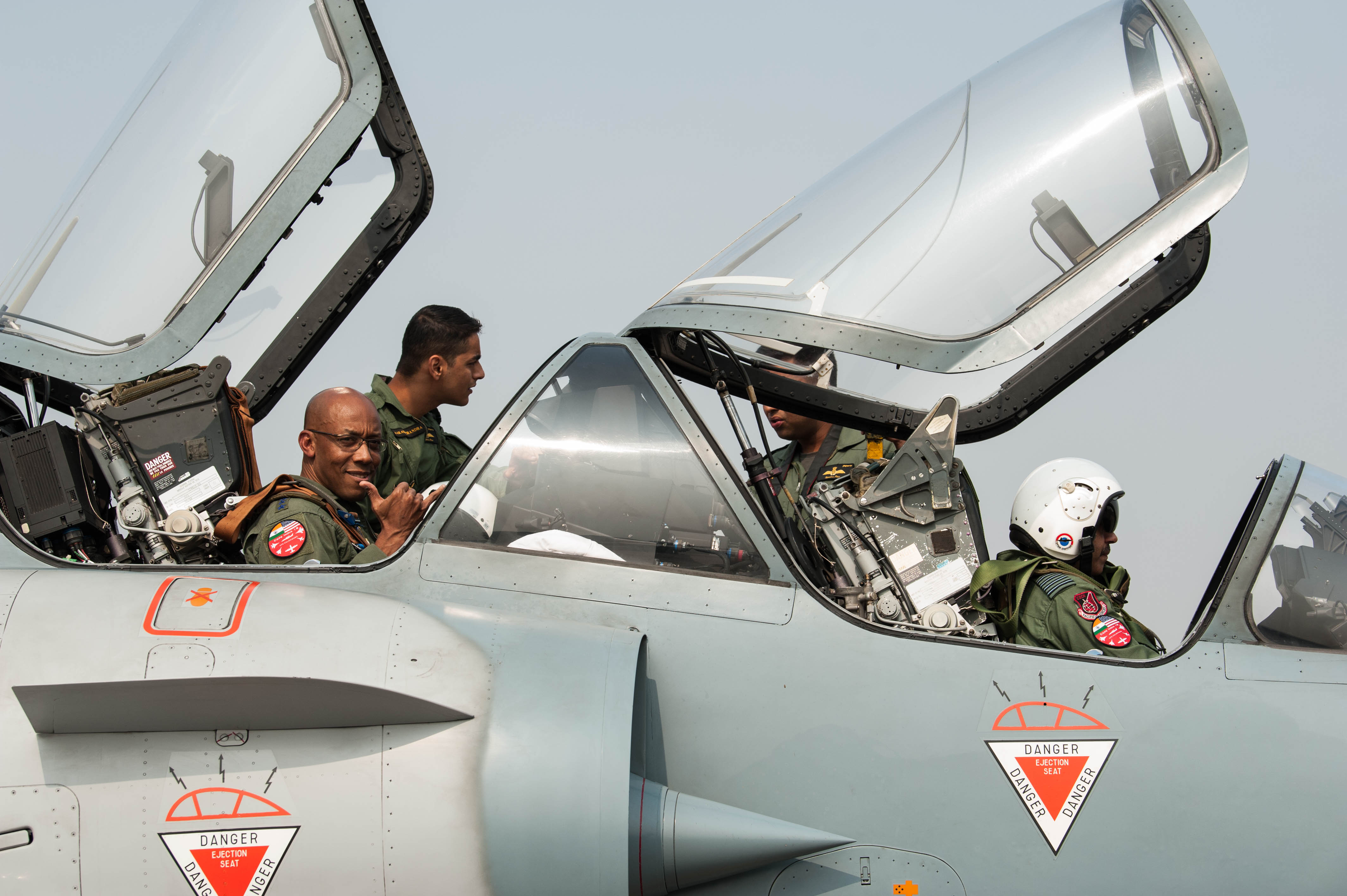Gen. CQ Brown Jr., Pacific Air Forces commander, prepares for an orientation flight in an Indian Air Force Mirage 2000 at Cope India 19 at Kalaikunda Air Force Station, India, Dec. 14, 2018. Air Force photo by Staff Sgt. Hailey Haux.
Seven months after US Pacific Command changed its name to Indo-Pacific Command, about 200 USAF airmen traveled to India for a bilateral exercise that participants called “extremely unique.”
The fourth iteration of Cope India came nine years after the last; the exercise was previously held in 2004, 2005, and 2009. The gap was due to resource constraints and difficulties aligning exercise schedules between the two countries, the Air Force said. The 2018 exercise included F-15s from Kadena AB, Japan, and C-130Js from the Illinois Air National Guard operating alongside Indian air force Sukhoi 20s, Jaguars, Mirage 2000s, and C-130Js.
SSgt. Richard Bishop, an F-15 crew chief with the Kadena-based 67th Aircraft Maintenance Unit, said the December exercise was one of the best he’s ever participated in.
“I’ve been on 20-plus [exercises]. Not a single one of them has been like this,” he said, adding that he would “go again in a heartbeat.”
Lt. Col. John DeLion, commander of the Kadena-based 67th Fighter Squadron, said he isn’t sure who was “more excited or happy to be there,” the USAF airmen, or the Indian airmen who hosted the exercise.
At a glance, the exercise was very similar to other bilateral exercises in that it started with smaller sorties, then moved to larger missions, so by the end of 12 days, they were flying large force exercises as sort of a capstone, DeLion said.
But while some previous exercises have been more of USAF versus IAF, this “was definitely all about working together,” he pointed out.
Cope India began as a fighter training exercise, according to the Air Force, but has evolved to include subject matter exchanges in a variety of specialties.
DeLion and CMSgt. Spencer Ridgway, superintendent of the 67th Aircraft Maintenance Unit, said the exercise also included an incredible amount of interaction and discussion on a wide variety of topics.
“It was as simple as how do we sign out tools, and how do we store them, and what’s our procedure before we let a jet fly on tool control,” Ridgway said.
Because of that interaction, Bishop said, he learned just how resourceful the Indian air force can be.
“We used tractors, like actual Farmer John tractors, to move around equipment, and we never would think that was a viable option,” he said. Additionally, he noted, US airmen worked with the Indians on how to put up a barrier for the arresting of jets in case of in-flight emergencies. What normally takes a week, he added, only took three or four days because of how they organized it.
DeLion said the exercise was all about interoperability, adding that “when we talk about interoperability, people tend to think of just in the air.” However, he said, sometimes interoperability means “can we go to a base and operate out of it?” or can the USAF use some of their tools.
“Just having that basic foundation layer of, ‘Can I land? Can we work out arrangements to get fuel in our jets, get oxygen in our jets, take off and operate out of there. That’s kind of step one, if you will,” DeLion explained.
Gen. CQ Brown Jr, commander of Pacific Air Forces, attended the exercise’s closing ceremony during a four-day visit to the country, and said Cope India “is just one part of an ongoing effort to strengthen the relationship between the US Air Force and the Indian Air Force.”
Such exercises enhance “the readiness and lethality of our airmen and our allies and partners,” he added, according to an Air Force release.
